The UK has announced a key role in developing long-range missile capabilities alongside European allies, according to a recent press release from the Ministry of Defence.
At a NATO Defence Ministers meeting in Brussels, Defence Secretary John Healey confirmed the UK’s participation in the European Long-range Strike Approach programme, a multinational effort to enhance Europe’s defence systems by the 2030s.
This programme will see collaboration between the UK, France, Germany, Italy, and Poland, aiming to develop cutting-edge long-range missiles designed to improve NATO’s collective air defence.
The announcement is part of the UK’s broader strategy to bolster NATO’s eastern flank. Healey signed a new defence roadmap with Estonia, reaffirming the UK’s commitment to holding thousands of troops from the Army’s 4th Brigade at high readiness, prepared to defend NATO’s borders.
This agreement also includes the deployment of advanced weaponry, such as Challenger 3 tanks and Boxer armoured vehicles, to Estonia in times of crisis. Healey said: “As global threats increase, the UK’s unshakeable commitment to NATO has never been more important. We are boosting our support for Estonia, with thousands of troops ready to deploy rapidly to the Russian border.”
Another key aspect of the UK’s involvement in NATO’s defence strategy is the DIAMOND initiative, which the UK will lead to improve NATO’s integrated air and missile defence systems.
The initiative is designed to enhance the interoperability of air defence systems across Europe, ensuring a stronger and more coordinated defence against missile attacks.
The Defence Secretary highlighted how the project is aligned with NATO’s future goals, stating that it would “strengthen the way European NATO allies coordinate their air defence against missile attacks.”


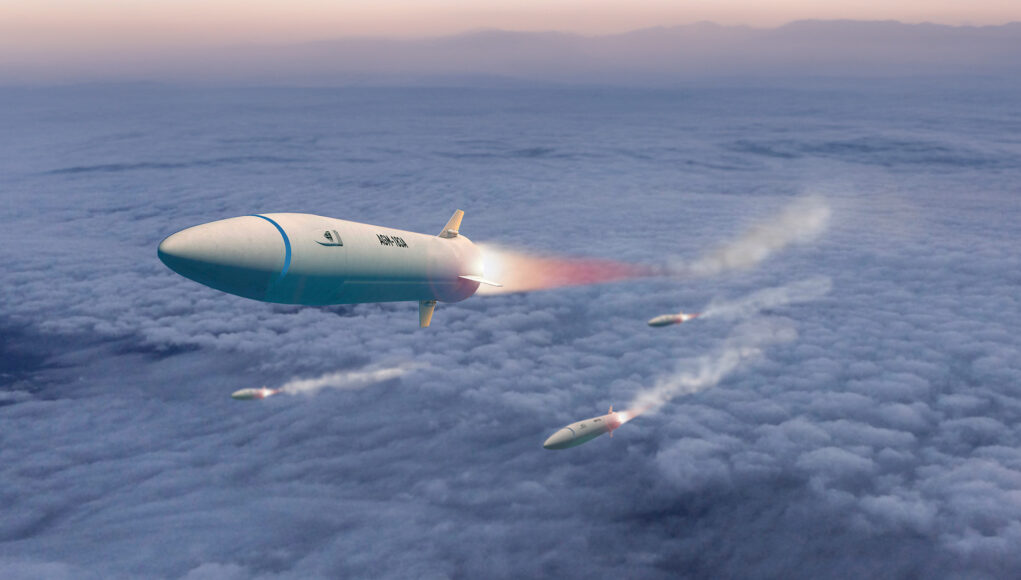


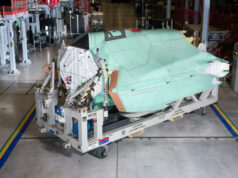
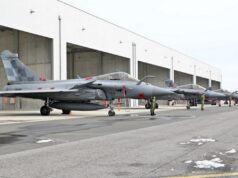

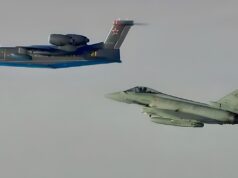
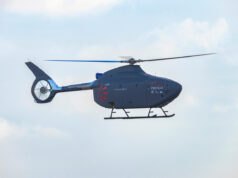
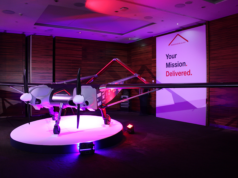
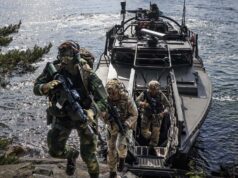


Good news indeed.
The article is wrong.
ELSA is not to make an air defence missiles but a +1000km attack missile.
I though the same, that this is the planned GLCM with Germany.
Is that really necessary at a time when the budget is already stretched, when we have TLAM and Storm Shadow?
And where is the money coming from?
And what gets cut to pay for it?
This is to be also land fired.
People are realising the huge amount of money and risk that an aircraft project means and the concurrent small quantity. While with long range missiles you can hit a target +1000km with similar precision and your missiles can evolve technologically much faster.
Germany, Italy, Poland and France signed the project in July. There were already talks at time of UK joining in. which occurred now.
Lots of benefits having a European long range “attack missile” – their use has been proven by Russian and Iranians. World is changing and we need the right systems.
Also a potential delivery system for range of warheads.
When I first read about this initiative in July, it was announced as a cruise missile and I thought it was France’s attempt to make Europe buy into FC/ASW. Now I think it’s about a European SM-3.
I have to admit I still can’t find official literature supporting this.
It is a journalist mistake. It did not originated here in UKDJ, i also saw in other sites.
ELSA (European Long-Range Strike Approach)
If so it’s a little disappointing in one way, but if it mean we get to flog off FC/ASW to the rest of Europe, defraying development costs, perhaps we owe the French a big merci.
It is not the same programme, this is German lead.
How could the UK, France and Germany all have the same long range SAM?
We are going for CAMM-MR alongside Poland, with the option of SAMP/T. France are all in on SAMP/T and VL MICA. Germany have Patriot and IRIS-T.
This sounds like a good idea but no idea what it will actually output.
The UK can have both land based CAMM and Aster as they will on the T45, shared inventories, familiar systems. Why is so hard to get some current mass together and have an eye to future technologies at the same time?
Well France Italy and the UK have a shared long range SAM and shared anti ballistic missile…there is also being more joined up on detection I suppose and there are a lot of other nations that the big three in Europe..so I suspect it’s about ensuring Europe goes down a European missile route…after all Germany has purchased patriot..they don’t really have skin it it’s game..maybe France, UK and Italy are offering it a bit of skin in the long range missile game ?
Indeed, that last paragraph about interoperability makes me think this might be as much to do with making sure Germany’s Patriots and Iris-T can properly integrate their search and targeting capabilities with the UK/French/Italian/Polish CAMM and SAMP/T. Like CEC for land-based systems.
That would be my take, the movement is already towards radars, sensors, command and processing et al becoming modular and missile agnostic. Poland presently is very much doing just that incorporating various missiles with various ranges and capabilities often with their own related sensors operating through a single command and control system. This makes complete sense, it gives flexibility the opportunity to use best in class or good enough cheaper alternatives while allowing continuous upgrading and enhancement without having to change everything. It’s similar to what’s happening in new generation fighters separating key elements but ensuring they can communicate and work together allowing updates and new weapons without having to reassess the whole aircraft wide systems aren’t affected by it, potentially reducing or avoiding costs and/or early obsolescence.
Despite being its biggest customer, the UK always appears to have been on the outside looking in on the Aster project. Are any of the components made in the UK at all? France and Italy appear to have been the ones doing all of the development work with the RN as a customer only to date.
I believe this time is about long range missiles. We need a lot of them for Russia or any like minded countries. The list seems to rise. Let’s share smartly the task and get industrial level, as we should. A common ground to ground missile will be very useful in many cases. And cheaper than 15 different types.
There’s what Europe has called long range and then there’s actual long range. As I understand it, ELSA is looking to produce 1000km+ range SAM.
Yeah, people here aren’t understanding that currently the UK operates no long range SAMs. Aster-30 is medium range.
Aster 30 Block 1NT is officially 150km. First test launch this week…
What would such a missile be for?
By the time it arrived the target would be able to get below the horizon and amongst terrain. The necessary booster would also be enormous.
Britain had the Mach 2.7 Bloodhound Mk2 back in the late 1950s, which had a published range of 190km, far longer than anything we have now. And technology has moved on a bit in the last 65 years.
The Israeli David’s Sling has a range of 300km and that is only considered medium/long. Check out the range of the US SM-3 and the Russian S-500. The Arrow 3’s published range is so long I have trouble even believing it.
If you want to know what the Mach 13.2, 1,200 km SM-3 is for, there’s plenty of literature.
BMD is usually separate from usual SAMs so Arrow 3 and SM-3 shouldn’t really compared with Aster, because the endoatmospheric travel gives them a massive range boost relative to air targets.
What about the GMD missiles? They have a range of thousands of kilometres.
The longest ranged conventional SAM in the West is SM-6 with anything up to 460km range. That’s still against high altitude, relatively slowly maneuvering targets.
If we wanted a modern Bloodhound for home defence, those sorts of ranges would be achievable with the technology from Meteor and Aster and the missile would still have BMD capability.
Then if the missile fit in mk41, we could use it as a European SM-6 equivalent as a HIMADS.
You can separate SAM from BMD if you like, although I’m not sure separation is useful for a discussion of proposed future capability, nor is conventional. Missile categories are blurring. We see the same missile type fired from ground, ship and air; and the same missiles capable of striking stationary and moving surface targets as striking aerial ones. CAMM, which can strike all three target groups and is fired from ground and ship, was derived from (and back uprgraded) ASRAAM. At longer range we’ll see FC/ASW fired from air and sea, and I’ve heard nothing to suggest an extra stage will be needed as with Scalp/MdCN.
If Elsa has a max operational range of 1000km-2000km as originally reported and it’s not for striking surface targets, it probably would be primarily BMD and anti-satellite.
What is very nice with current British missile development is the move towards family-based hardware.
At the moment we have the ASRAAM-based family with CAMM and its variants and the Brimstone based family with its later versions, Spear, and Land Precision Strike.
What is needed now is to try and develop a family of missiles based off the technology of Meteor and Aster, mostly for GBAD and naval air defence but also potentially feeding into a longer ranged AAM as well.
I don’t think there is enough in the public domain about FC/ASW to be certain of anything. All of the pictures so far show the two variants in the cruise/deployed stage, with nothing on launch or impact. They will probably end up with a booster, I haven’t heard of a cruise missile that didn’t use one for VLS launch simply because jets don’t have the thrust to lift them vertically.
Soft vertical launch a la CAMM? Of course, it might be too big for gas canisters, but new tech just keeps on keeping on and I wouldn’t rule it out.
Even then the jet has to accelerate to cruise speed before gravity pulls the missile below deck level.
A Sea Wolf style jetivator booster might work to reduce the radar signature of the launch by reducing maximum “boost height” but you still need the rocket for pure accelerating power.
We seem to be having a lot of conversations at the moment, thanks for the engagement and useful info 👍
What is the point of wasting £billions on new capabilities such as this when our military have huge problems elsewhere? We cannot retain sufficient trained personnel in any of the three armed forces. Hugely expensive assets such as the new Astute SSN, loaded with the latest Spearfish, are alongside because the RN has too few submariners. A carrier strike group has just deployed without a FSS ship!
Now it seems that REME have insufficient helicopter engineers to maintain the fleet – and this now affecting pilot training. Similar problems remain unresolved with RAF fast jet pilot training. The Army is perennially short of establishment, the SPG donated to Ukraine have yet to be replaced….
Before we waste more £billions on R&D developing new capabilities for deployment far into the future, we should make sure that we can field what kit we have already got.
It’s not wasted. We have to stay ahead technologically of our rivals. In a major crisis getting personal is the easy bit, you just call up what you need and basic soldiers etc take a few months to train. Developing the tech that gives you the edge in battle takes years and a lot of money. You have your priorities the wrong way round.
Now I don’t disagree that currently there are issues in all the areas you’ve brought up. They need dealing with, but priority one in spending in modern defence is R&D, your entire armed forces can be obsolete very quickly now.
In no way does it take a few months to train soldiers. Of any kind.
I absolutely understand what you are saying but ultimately if a huge crisis occurs mass is easy to achieve, just as in 1914 and 1939. Yes it takes years to get the experience but if your tech and weapons are inferior, mass means nothing. We entered ww2 with good kit because the R&D had been done in the 20s and 30s. Try WW2 with no radar, spitfires, ASDIC, Merlin etc etc, they all took years to develop, they didn’t just appear during the war. Yes invest in people but R&D has to be priority.
It takes five years to create a competent infantryman.
It takes that long to create a competent technical person in the R Signals.
Again in peacetime. Unless you’re suggesting that nobody called up in either War was competent?? At leisurely peacetime drumbeat competence takes years. A crisis speeds things up considerably, so best you have the R&D done. Radar and the Merlin engine weren’t dreamed up in Autumn 39…
In peacetime yes. That is still a fraction of the time it takes to research and design a new weapon system.
You are thinking about this in the wrong way. It’s not about numbers of soldiers, or sailors etc, it’s about deployable capability. That takes years of technical training, experience and individual careers to be effective. You can train an infantryman in 6 months. But he needs to join a section with a LCpl (3-4 years), a Cpl (5-8 years) and be overseen by a Pl HQ where the Sjt has at least 8 years of experience.
The Coy HQ needs a Major, a WO2, a CSjt and Signals detachment etc.
The Support Company have years of experience as do the HQ Coy.
Collectively, that is military capability. Not just numbers of ‘basic’ soldiers.
8 years for a Sgt is still a hell of a lot shorter than the 10-20 years to field a new system. You can have all the experience in the world but if they are using weapons technically inferior to their enemy they will not get much more experienced…
You are fundamentally correct this will make systems and platforms potentially far more effective and long lasting, strengthening where required without having to remove perfectly good systems for a lack of overall compatibility.
Simply because the only significant threat to the Uk itself comes from long range air attack . Be that sea based cruises missiles, land based cruise and ballistic missiles, long range drones or air launched weapons…the only way to actually hurt the UK and force it out of a war is to hit it hard via the sea and air…so it’s the one area we need to have a shed load of investment in….the reason we are actually weak to this is because of the very thing you suggested we disinvested in this area for a very long time.
Agree. This is just more posturing and grandstanding by HMG. They are sadly as good at that as the last lot.
No where in the article does it say they are spending billions or that they are buying anything of substance, it is an agreement to improve how air defences of different nations work together. It could just be a strategy document about how batteries are placed in the event of a war to provide max coverage.
At last a voice of reason and common sense.
I think the idea is to create a scenario where flexibility and inefficient costs are reduced and making best use of what’s available. Not saying that will happen but it’s a noble cause and definitely required otherwise collective defence is hamstrung and inefficient for the sake of self serving national policy making. This potentially gets the best of both worlds.
We need to invest in capabilities like this because warfare has changed, if you can’t defend against ballistic missiles now you can’t fight at sea or land. We need an integrated defence across Europe as this is where our army will be fighting in a war. This is a far more important capability to have than many of the gaps that exist in our expeditionary capability.
Spin.
Previously we heard that SACEUR wanted the 3 UK Division as the “Strategic Reserve”
Which makes sense, the Eastern European nations are at the coalface geographically, and 3 UK is garrisoned in the UK save for some of its equipment forward deployed in Germany and the EFP BG in Estonia.
If we expand the EFP BG in Estonia from an already small Armoured Division, it is not a SACEUR reserve. It cannot be in two places at once and is already hamstrung keeping a simple BG in Estonia.
I know elements of the military are “double hatted” all the time but it is either one or the other.
And why Estonia? With Sweden and Finland now in NATO does in not make greater sense that the UK concentrate on the areas further north?
4 Brigade now at “high readiness”
Woopy Doos.
This is a “Brigade” that many will have seen Dern and myself discussing on many occasions. It is a Brigade of Light Infantry Battalions, some of which are assigned to Public Duties, some of which rotate in and out of Cyprus, and one is in Brunei.
It has but one regular CS element, a Regiment of Light Cavalry in Jackals.
It has no other regular CS CSS AT ALL.
No Royals Signals Regiment.
No Royal Artillery Regiment.
No Logistics Regiment.
No REME Battalion.
No RAMC Regiment.
These elements come from the Army Reserve. An Army Reserve that is set up to deploy individuals as augmentees to other regular formations, not as formed units.
I now read this Brigade is at 10 days notice.
WHAT IS THIS BRIGADE SUPPOSED TO DO?
If its supports are robbed from other formations that is a fig leaf, other formations are now left without, namely 12 ABCT, 20 ABCT, 16AABCT, 7 LMBCT. Or maybe they are drawn from other parts of the Field Troops, all of whose formations have a distinct support role and not a close support role for a Brigade.
Then we have Air Defence.
“Another key aspect of the UK’s involvement in NATO’s defence strategy is the DIAMOND initiative, which the UK will lead to improve NATO’s integrated air and missile defence systems.”
The UK will lead??? Lead? Other European NATO nations actually deploy GBAD at scale and are ordering more, look at Germany with Arrow 3.
They are leading, they are doing, not just talking.
We in the meantime announced grand plans years ago to “double” MRAD and “Triple” SHORAD, with no details forthcoming for years now as to how this actually happens in reality.
All we have are 12 Rapid Ranger as a cheap stop gap to replace some Stormer given to Ukraine.
Where is the money coming from?
Is any of this funded in the Equipment program?
We are also “doubling lethality by 2027 and “trippling” it by 2030, while getting rid of even more of the kinetic things that kill enemies, namely, guns and cannons on IFV.
Sadly this government so far is grandstanding as badly as the last, all words, no substance or actual expansion in MONEY.
We have had, so far, MoD DEL for the year cut by 700 million, a pay increase shouted about which came from MoD’s own funding, not new money, and the RFA falling apart.
That is the current reality.
Now if Future Soldier announces shortly a great expansion in AD and in CS CSS for 4 Brigade then great.
Where is it? And where are these CS CSS supports coming from.
4 Brigade is a “golfbag” of formations orphaned from CS CSS as they were all cut in the defence cuts from 2010 onwards. It is a Brigade in name only.
Till then. All hot air Healey.
Why not come on UKDJ and explain?
“Why not come on UKDJ and explain?”
Daniele – an outstanding suggestion. The issue really is about the incompetence of the MoD in managing the £billions of taxpayers funds provided and it’s inability to convert said funds into kit and trained personnel. Whilst having a departmental strength of about 65,000!
Healey should be asking why a small country such as Israel with a population of about 8 million, surrounded by enemies, with a fraction of the defence budget that we have, is able to wipe the floor with it’s adversaries.
A significant amount of its budget comes from the USA.
It also uses conscription to bolster numbers.
👍 yes while some lessons could be learned there, it’s rather comparing apples to cucumbers.
Its adversaries are not Russia and china, that’s why.
The current governments is just running on auto pilot from what the last government set out, there can’t be anything added until the budget is set along with the defence review. I agree with your point about units not being assigned but there are around 80,000 personnel under UK land forces so in a war it really should not be difficult to deploy and extra brigade. It’s not like we have many land commitments these days. In terms of lead the Uk is the only country working with EUROSAM on aster, sky shield with Germany and CAMM MR with Poland. This sounds like trying to tie it all up into an integrated system.
To deploy a Brigade, persistently, it either has to be garrisoned in theatre, at great expense, or you need at least 3.
1 doing, 1 preparing for/training, 1 recovering, leave.
Yes, with 73k we should on paper be able to have more than 4 or 5 all arms brigades.
But the army is not structured that way and has many other Brigades and Groups and the support and home org that need staffing.
If 4 Bde is made fully deployable with its full CS CSS and the army retain the third Armoured Regiment, even these small steps are a huge plus for me.
On GBAD, still no explanation on how the enhancements happen, and no actual spend on kit, unlike the rest of European NATO, which was why I somewhat scoffed at Healey making headlines at the UK being “lead” and talking of Brigades for Estonia when even a BG is causing issues.
Sweden and Finland have their own plans to stand up to Russia, Estonia realizes that it is too small to do this on its own and needs assistance from a larger country. At some point it was decided that the larger NATO country assisting Estonia would be the UK. We have had some forces there for many years now and are increasingly used to working with the Estonian military. It makes sense to put our limited contribution there and to arrange to reinforce our contribution, rather than spread our forces across the whole of a potential front line which is very long.
Having said that our main problem/task will be preventing the Russian fleet breaking out into the Atlantic. It won’t look like Bismark breaking out but it will still present the same target. Large amounts of shipping bringing American equipment to Europe to reinforce the front lines.
The other interesting bit is committing to have an armoured brigade at high readiness for the Baltic states intervention. That’s all very lovely but the UK only has 2 armoured brigades, if you’re committing one to very high readiness for a specific region. Well I’m just not sure that’s a commitment you can make without having three armoured brigades.
Then it is not the SACEUR reserve if it is tied to one area. It is one or the other.
And yes, with only two, how is it even possible?
Maybe the army is about to be transformed!
Maybe Pigs might fly….and then the RN and RAF also need investment.
Yes indeed, far to many commitments for the resources allocated..there are only three states, either…
1) you only commit to the level of resources you have, which will always mean something suffers and there is a negative geopolitical cost or
2)you commit and resource to your commitments properly, there is a positive geopolitical gain with this but a negative in that it costs the tax base.
or do the really stupid thing that will bite you very very hard ( which we have been doing for the last 20 odd years really,but gradually doubling down since 2010 as the world got more deadly while our capacities still got steadily weaker).
3) commit but not resource…now this looks lovely to the accountant as it’s low cost, looks lovely to the politician because your committing and gaining the geopolitical rewards for that..but it’s like any boom bust bubble, as it has no foundation or true value it will burst and the burst will be catastrophic as another geopolitical power calls your bluff and your cast into a catastrophic conflict you have no ability to win.
Yes 3 is certainly to much of a policy in recent times, Boris Certainly did it freely. Only works if it prevents a conflict makes things far worse actually if one kicks off agreed. Reminiscent of our guarantees to Poland in the thirties.
That basic economics, everyone including the USA and china face the same scarcity problem. In WW2 with hundreds of divisions we still had to make choices.
Geography really dictates we will be defending the Nordic States, Estonia is very much part of that strategy. Other Countries like Germany France, Italy, Poland will be more biased towards the eastern flank. The reason? If the northern flank fails Britain will as in the war have a dangerous adversary across the North Sea closer to Shetland than the Maui land us and with free access to the North Sea, Artic and the Atlantic on mass. The Baltic States are the doorway to that scenario and reverses the NATO control over the Baltic. I suspect Russia and its allies know that and so should we.
Don’t get me wrong I think it’s the correct approach, I just don’t see how the British army can cover its commitments with only 2 armoured brigades.
I personally think three armoured brigades is essentially the minimum required for the commitment we have.
Have to get through Finland and Sweden first while half of NATO is massing on the road to Moscow or 50 miles from st Petersburg. Russia doesn’t have those capabilities. If they did we would all be investing more as in the 80’s.
You can it’s just means it’s less ready than it would be with 3 and there is less follow on. It would be more ready if you had 5.
Equals no persistent capability and in effect as silver bullet once shot and the army is running even hotter than now.
Yes, pre 2010 we had a rule of 5.
Having read the comments I can only conclude that the only area of defence that is adequately funded and staffed is the MOD itself. 65000 at last count as apposed to 72500 regulars Now who does not think there is something fundamentally wrong here ?
I say give them guns then… though more likely thanks to them (as in 1940) it would be broomsticks.
Remember things like the RFA are in that number not to mention hundreds of jobs previously done by service personnel including things like ships laundry.
It’s about time the UK decided if we are fully in with the next generation of Aster 30s. Italy and France are already testing Aster 30 Block 1NT, which will go on the Horizons. Even as far back as 2016 we said we would also look to put 1NT on the Type 45s, but we are instead planning to implement Block 1. Then we started crowing about being two or three years ahead of the other two, when that was only because we are implementing an earlier generation which Italy and France implemented on land only. We should throw our weight behind Block 2, ensuring its compatability with Mk41.
CAMM, along with Aster 15, IRIS/T and even Hisar/Siper shows that Europe isn’t lacking in short to medium range SAM initiatives, all extending 25km range rockets (ish) beyond 100km. However, we are bereft on medium/long and long range (200 km++) and exoatmospheric.
I originally thought ELSA was a 1000 km+ ground strike missile. That it’s air strike puts it a different league, and is to be welcomed.
I suggest we leave out any US parts as they will prevent us from using them!
And use future missiles with a GPS alternative
Otherwise we will be like the Ukrainians… unable to strike Long Range targets🙄